Via press release on December 11th, 2019 the Mi’kmaq Miawpukek First Nation on the South Coast of Newfoundland in Conne River announced a partnership with Newfoundland based Terra Nova Genomics to utilize a National Geographic Explorers Grant to complete a study on the relationships of Newfoundland Mi’kmaq with other groups on the island including the Beothuk. Headed by geneticist and Memorial University professor Dr. Steve Carr it is being touted as the “largest DNA genealogy study of a First Nations group in Canada.”

The Ill-fated Beothuk People
The Beothuk were a relatively small First Nations group native to the island of Newfoundland who were mercilessly hunted by Europeans and ravaged by foreign disease. Little is known of their culture apart from information gathered from a select few Beothuk women taken by Europeans throughout the late 18th century and early 19th century.

This includes the last documented Beothuk woman Shanawdithit who passed away with Tuberculosis on June 6, 1829 in captivity in St. John’s. The Beothuk culture is known to be distinct from other groups and were known to use red ochre on their bodies. They generally were pushed to the inland as the white population in Newfoundland began to grow. While the Mi’kmaq of Newfoundland forged positive relationships with the Basque and French beginning in Placentia around the time of first contact, the Beothuk generally had negative experiences and conflicts between the two groups were prevalent.
Ever since the supposed extinction of the Beothuk with its last known member dying in 1829, there have been rumours of intermarriage between the Beothuk and the Mi’kmaq. Long-held beliefs in Conne River and across Newfoundland have said that the Mi’kmaq protected several members of the Beothuk tribe to avoid persecution with the Europeans. The last known locations of the Beothuk, based on rumours and historical accounts, include Halls Bay and Red Indian Lake in Central Newfoundland and Long Harbour River in Fortune Bay.
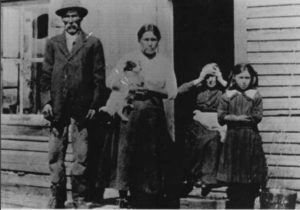
Beothuk Blood running through the veins of Descendants?

One of the most famous claimants of Beothuk ancestry was that of Santu Toney who was found with her son selling baskets on the beach in Massachusetts in the early 20th century. Discovered by American anthropologist Frank Speck in 1910, whom published a book named the ‘Beothuk and Micmac’ where he detailed interviews with First Nations people across Newfoundland and the Eastern Seaboard, Santu claimed to be the daughter of a Beothuk man named Kop who was taken in by the Mi’kmaq at a young age. He married a Mi’kmaq woman and had Santu in 1836 in Newfoundland. If this was true, Shanadithit was not the last known Beothuk and there are descendants of the Beothuk today. At a young age, Santu claimed she had moved to Nova Scotia and had travelled extensively since. Santu provided Speck with a Beothuk song which he recorded her singing and is still available today.
With the advent of widespread DNA testing, researchers have begun to try to understand the Beothuk and discover if there is a connection between other groups on the island. In the mid 2000s, two Beothuk skulls of husband and wife, Demasduit and Nonosbawsut, were DNA tested for their mtDNA haplogroup. Nonosbawsut had been killed in a skirmish on Red Indian Lake in 1819 and his wife Demasduit captured and tragically dying of Tuberculosis on her way back to her people in 1820. They were of the Native American haplogroups of X and C.
Several recent DNA studies have begun to unravel the mystery of the Beothuk
Later in 2010, Ashley Collier completed, under a direction of Dr. Steve Carr, a Masters theses entitled “Mitochondrial haplotype analysis of Canadians of aboriginal descent, with particular emphasis on the Mi’kmaq of the Miawpukek First Nation, Newfoundland.” In the research conducted to support this thesis, 31 individuals from Conne River were mtDNA tested. The results concluded that only 3 out of the 31 individuals had Native American Haplogroups, with a Blackfoot Alberta Native also tested. Many of the other individuals were all European mtDNA haplogroups as they would need a direct maternal line that was inherently indigenous. Meaning their mother’s mother’s mother etc. direct line must be an unbroken Native line. Unfortunately, the earliest direct maternal ancestors were not disclosed in the study leaving any researchers and family historians without any indication of which early Conne River ancestors had the specific haplogroups.

Correspondingly, in 2017 McMaster University released a study that did comprehensive mtDNA testing on 52 Maritime Archaic skeletons from burial grounds in Port aux Choix and L’anse Amour with most going back thousands of years, along with 19 Beothuk skulls including that of Demasduit (mtDNA haplogroup C1c) and Nonosabasut (mtDNA haplogroup X2a1b). The study did not include the Mi’kmaq and did not utilize autosomal DNA, if any was extracted. The researchers concluded the groups were distinct with no connection based on the mtDNA results, but with such a small pool and lack of Mi’kmaq involvement critics ask how could they be sure?
A follow-up research article completed by Ashley Collier and Dr. Steve Carr named “On the persistence and detectability of ancient Beothuk mitochondrial DNA genomes in living First Nations peoples,” which utilized the mtDNA completed by Collier in 2010 in comparison to eight distinct Beothuk lineages against other Native Americans, which concluded with a limited amount of evidence that Beothuk lineages cannot be closely associated with the Mi’kmaq as of yet.
National Geographic-Funded Project to study entire genomes of Conne River members and compare them to other groups
This brings us to the most recent study funded by the National Geographic Explorer’s grant of $30,000 USD which will significantly raise the bar for Mi’kmaq DNA testing and comparison with Beothuk and other indigenous groups remains. Chief Mi’sel Joe of Conne River has long been a proponent of Mi’kmaq DNA testing to compare with the Beothuk and has relayed the long-held belief of intermarriage between the Mi’kmaq and the Beothuk as passed down through the generations. The initial study is depicted as being limited to those enrolled in the band leaving the door open in the future for testing groups outside Conne River. One would think the testing of Santu Toney’s descendants in Nova Scotia would be paramount, as those from her son Joe Toney are documented and are still living in Yarmouth, Nova Scotia. There are also several families both Mi’kmaq and European throughout Newfoundland with family histories of connections with the Beothuk that could be beneficial to test.
Chief Mi’sel Joe of Conne River has long been a proponent of Mi’kmaq DNA testing to compare with the Beothuk and has relayed the long-held belief of intermarriage between the Mi’kmaq and the Beothuk as passed down through the generations. The initial study is depicted as being limited to those enrolled in the band leaving the door open in the future for testing groups outside Conne River. One would think the testing of Santu Toney’s descendants in Nova Scotia would be paramount, as those from her son Joe Toney are documented and are still living in Yarmouth, Nova Scotia. There are also several families both Mi’kmaq and European throughout Newfoundland with family histories of connections with the Beothuk that could be beneficial to test.
Dr. Carr states in the press release that the “National Geographic Geno Test kit will be used to collect maternal, paternal and bi-parental DNA markers,” which in turn appears to mean there will be complete genome testing which includes yDNA (father’s father’s line), mtDNA (mother’s mother’s line) and Autosomal DNA (comprehensive DNA passed from all ancestors which can match relatives typically within the last 6-7 generations). Autosomal DNA testing would be beneficial in comparing modern day Mi’kmaq with those of the Beothuk husband and wife as the genealogical timeframe of Autosomal DNA is well within its limits if close relatives of Demasduit and Nonosabasut married into Mi’kmaq families.
The study according to the press release will initially test 20 people, with an emphasis on those who can trace their maternal ancestry as distantly as possible, likely to document the earliest ancestral women in Bay D’Espoir. They will be consulting with community genealogists to accurately document the lines. It would be beneficial to researchers and genealogists if they release the direct maternal and paternal ancestors and their haplogroups for future use.
Testing is set to begin January 2020 and is bound to be a comprehensive look into the Mi’kmaq of the South Coast of Newfoundland and their connections with other groups on the island.

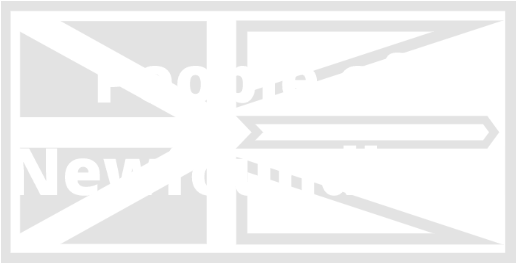
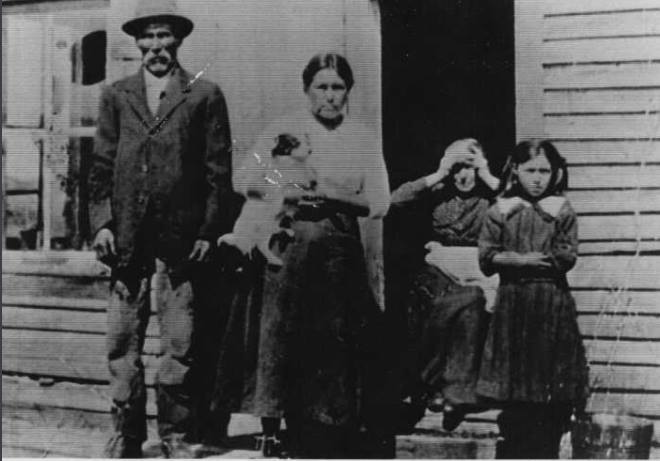
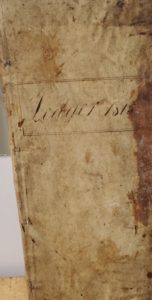
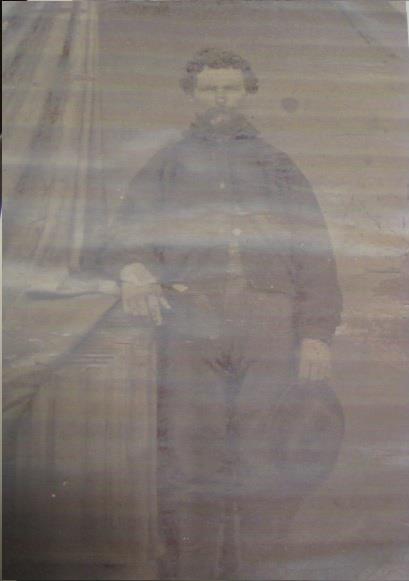
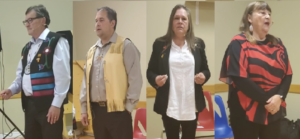
Peter John in the picture above is my great great grandfather!
My maternal grandmother is Mary Ellen John…granddaughter of Peter john. This is very interesting
Wow! How wonderful is that?
Our Beothuk First NATION TRIBE OSA ANA gave our HAPLOGROUP Mtdna C1c to Parliament Minister’s a d they have recommended the Beothuk First NATION TRIBE OSA ANA to Aborigonal Affairs Minister Oregan in Newfoundland Labrador. The Mikmaq are stealing the remains of our tribe and holding the hostage
Mary Ellen John was originally a Benoit daughter of George Benoit and Jenny Drew, who married George Benoit, then widowed and married John McDonald, widowed again and married John Hinks sr. (Mary Helen was half sister to my Grandmother, Angelia Collier, nee McDonald) Mary Helen married Jim John son of Louie John who was also father of Peter John, Steve John and Mike John, all sons of Louie John and grandsons of Peter John sr. who drowned on the Gander River between Glenwood and Gander Bay… Mary Helen walked with Jim from Conne River to Glenwoods and gave birth halfway across, the place is still known today by mikmaq as mijwagjij sipog (baby brook).. re-named today by sports salmon fishermen on the Baie d’Espoir highway as Cat Brook…
My parents were from Bay dspoir father from Conne River we are Micmac. I would like to be tested for this study. Please email me
Much appreciated.
Not the same Mary Ellen john I referenced as my grandmother above. My grandmother mary ellen john was the daughter of Louis john. Louis John’s father was peter john ..
Shown in this picture
I was told by a senior man from St. Joseph’s Cove that we had Beothuck blood in our family. He is now deceased. He said he had proof but did not offer it to me. I don’t know why he gave me this information but he died shortly after. Makes me wonder if it is possible. My great, great grandmother was Mary MacDonald of Conne River, she married George Hoskins.
My great great grandfather was Noel Matthews.we are the descendants of Sarah Matthews. My mom passed in 2015. She was the last of the Thornhill/Dunne family.Im more than willing to have more DNA done
How does one find out more about testing?
I would love to get in on this DNA testing. My ancestry is from Aspen Cove, a known regular Beothuk summer campsite, as well as Indian Islands. My grandfather looked native, as does my mother and her siblings, but I can’t find anything in my family tree.
I would love to know more about this. I have a great uncle (last name Cole) that said we have native blood 4 generations back from him, unfortunately this is all we know. My father had the native look as does one of my aunts.
My 5th ggm Catherine Duval is a confirmed C1c.We don’t know who her parent’s were.Hopefully we can the pieces together.She was Mikmaq ( and possibly Beothuk) interpreter during the English – French wars.
I would love to know if the Eagle River/Paradise River Lethbridge families are related to the Newfoundland Mi’kmag people. We know Mary Ann Lewis, my great great grandmother was a Mi’kmag.
I was told through my man’s side her grandmother was part native or native and married a white man, she referred to the natives as ‘red indians’ my Nan is Elizabeth Morgan Coles of Carmanville, her mother was Priscilla Coles Morgan ( her sister is the famous Aunt Martha from the song Aunt Martha’s Sheep) it was Priscilla and Martha’s mother that was native, I have pics of great grandmother Priscilla and Great Aunt Martha, they do look a bit native, and I had DNA testing done there’s Native and Asian DNA present
This interests me as my great grandmother had unknown native blood and she is from the south of Newfoundland. Bay Roberts or Carbonier are mentioned in her tree. She married a fisherman who was a Nova Scotia Conrad. I thought I read something about Fortune Bay the other day but cant find it now. Family names there are Trenchard, Luther, Marshall,
We tried to prove an ancestry a few years ago but were turned down even though our cousins were all accepted. They were chiefs and members and our fathers were brothers but they still would not accept us. I have brothers and sisters who attended the Pow-Wows and we tried to support auctions and buy artifacts and were very disappointed.
My father was adopted. His biological father was Albert Cecil Messervey from Sandy Point. His adopted parents use to tell him he had native in him.
My grandmother was Catherine Benoit, Mi’kmaq born 1906. my mother, Edith Hall, was born in 1926 in Corner Brook. I’ve already done DNA testing on 23andMe is there a way I can give my results to this group?
Would love to be a part of this study
I would love to be part of this study. My Frank Joe and Carolyn John family came from Halls Bay. My gggrandmother Louisa Frank Joe married Vincent Paul Benoit ( Mi’kmaq). She had a brother Benjamin Frank Joe married Marie (Mary) Benoit , Vincent Paul’s sister.